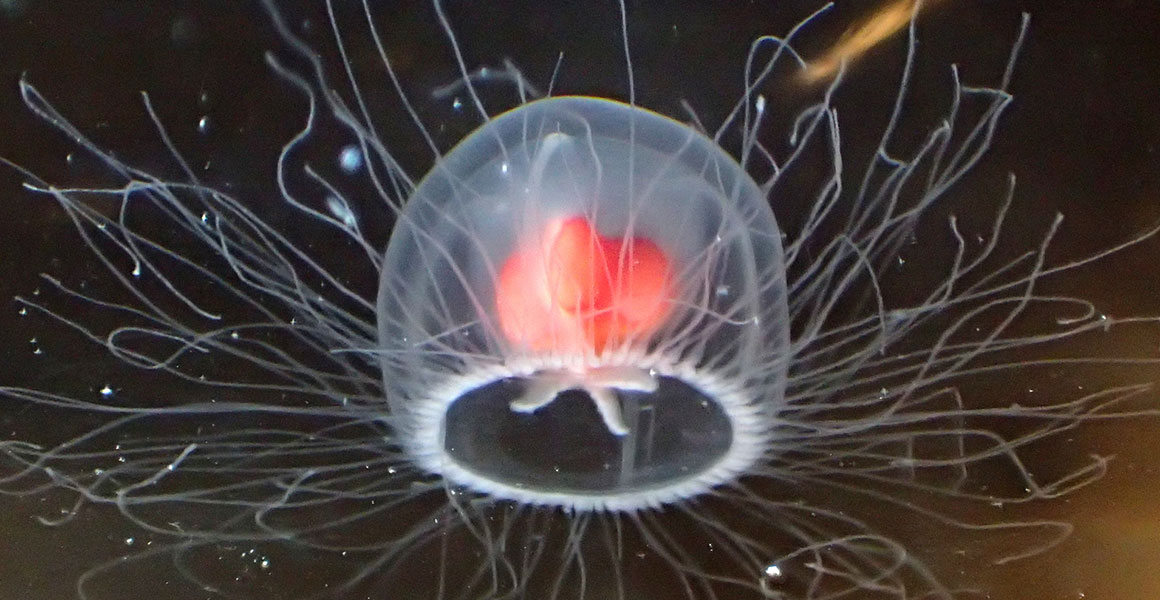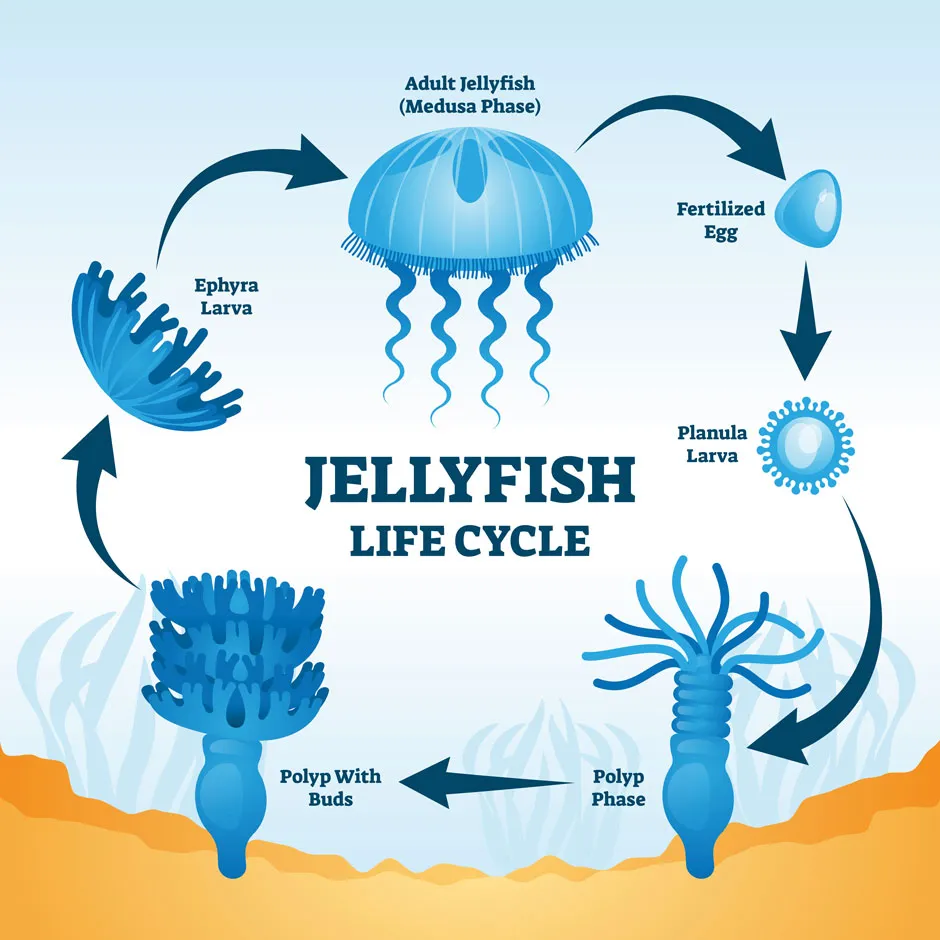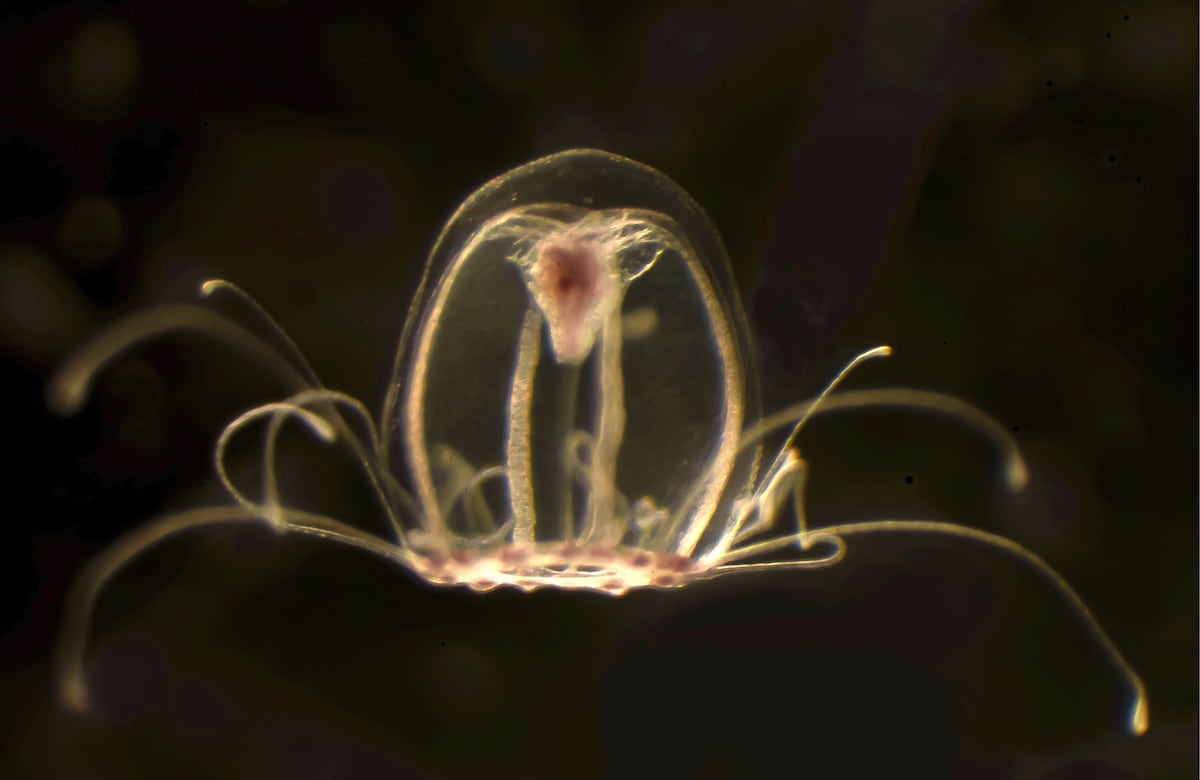
Introduction
Turritopsis dohrnii, commonly known as the immortal jellyfish, has captivated scientists and the public alike with its remarkable ability to essentially reverse its aging process and escape death under certain conditions. This comprehensive report delves into the lifecycle, the mechanism behind its immortality, scientific studies, and the potential implications of this fascinating organism.
Lifecycle of Turritopsis dohrnii
Early Stages

The lifecycle of Turritopsis dohrnii begins similarly to other jellyfish species. The process starts with a fertilized egg from which emerges a small larva called a planula. The planula swims freely until it finds a hard surface on the ocean floor[1][2][6].
Polyp Stage
Once settled, the planula develops into a polyp, a stationary life stage that attaches to the substrate and can reproduce asexually to form a colony[1][2][6]. The polyps bud off into a stage called ephyra, which eventually grows into an adult jellyfish or medusa[1][2].
Medusa Stage
The medusa is the free-swimming, sexually mature form most people recognize as a jellyfish. Medusae can reproduce sexually, generating eggs and sperm that combine to start the lifecycle anew[1][2][6].
Mechanism Behind Immortality
Transdifferentiation
The immortal jellyfish can reverse its lifecycle through a process known as transdifferentiation. When faced with environmental stressors, physical damage, or old age, the medusa transforms back into its earlier polyp stage instead of dying. This involves the deterioration of the jellyfish's bell and tentacles and the reformation into polyp cells[1][2][8][10].
Transdifferentiation allows specialized adult cells to revert to a more primitive state and then transform into different types of cells. This process ultimately enables the jellyfish to start its lifecycle over again[3][4][8][10].
Scientific Discoveries
The phenomenon was first observed in the 1980s by scientists Christian Sommer and Giorgio Bavestrello, who noticed that T. dohrnii medusae could revert to polyps without undergoing fertilization or larval stages[1][3]. Subsequent studies by scientists like Ferdinando Boero and Shin Kubota confirmed and expanded upon these findings, establishing the jellyfish’s unique biological characteristics[3][6][8].
Genetic Insights and Ongoing Research
Genetic Studies
Recent research efforts have focused on understanding the genetic underpinnings of Turritopsis dohrnii’s immortality. Scientists at the University of Oviedo in Spain sequenced the jellyfish's genome and identified specific genes involved in DNA replication, repair, and stem cell renewal. These genes become particularly active during the jellyfish's transdifferentiation process[7][9][10].
One significant finding is that the immortal jellyfish has double copies of genes associated with DNA repair and protection, which may provide it with enhanced regenerative abilities. The species also possesses unique mutations that help to maintain telomere integrity, further contributing to its longevity[9][10].
Implications for Human Aging

While the exact mechanisms remain a mystery and practical applications are still far from realization, the study of T. dohrnii offers promising insights into cellular regeneration and aging. Understanding how these jellyfish manage to regenerate their cells could lead to advancements in treatments for age-related diseases, cancer, and other medical conditions involving tissue regeneration and cellular repair[8][9][10].
Distribution and Ecological Impact
Global Spread
Originally discovered in the Mediterranean, Turritopsis dohrnii has since been found in temperate to tropical waters worldwide. This spread is believed to be facilitated by human activities, such as the discharge of ballast water from ships[1][6][8].
Invasive Species Concerns

Despite their fascinating biological properties, T. dohrnii is considered a 'silent invader' due to their tiny size and the lack of noticeable ecological impact compared to other invasive species[1][7]. Their spread has gone largely unnoticed, offering a reminder of the often unseen ways human activities can alter natural ecosystems[1][6][7][10].
Challenges in Research
Difficulty in Cultivation
Maintaining Turritopsis dohrnii in captivity poses significant challenges. Only a few researchers, like Shin Kubota, have managed to sustain colonies of these jellyfish for prolonged periods, highlighting the difficulty in studying them continuously under controlled conditions[1][6][8].
Overcoming Skepticism
Initial skepticism greeted reports of the jellyfish's transdifferentiation capabilities. However, repeated experiments by multiple researchers have validated these findings, though the mystery behind the exact molecular mechanisms of this process remains unresolved[3][8].
Conclusion
Turritopsis dohrnii, the immortal jellyfish, represents one of nature's most intriguing phenomena. Through the process of transdifferentiation, it can revert to an earlier stage of its lifecycle, offering compelling possibilities for future research into biological aging and regeneration. While practical applications for human medicine are still distant, ongoing genetic studies promise to unlock further secrets of this fascinating organism. The journey to fully understand T. dohrnii continues, providing both profound scientific insights and a humbling reminder of nature's complexities.
The study of the immortal jellyfish not only highlights the potential for biological immortality but also underscores the importance of biodiversity and the often-overlooked impacts of human activities on natural ecosystems. As research progresses, this tiny, seemingly inconspicuous jellyfish may hold the keys to unlocking new frontiers in science and medicine.
Get more accurate answers with Super Pandi, upload files, personalized discovery feed, save searches and contribute to the PandiPedia.
Let's look at alternatives:
- Modify the query.
- Start a new thread.
- Remove sources (if manually added).